
1. http module
const http = require('http')
http.createServer(function(req,res) {
console.log(req.url) //获取url里面携带的参数
res.writeHead(200,{'Content-type':"text/html;charset='utf-8'"}) //设置响应头
res.write("<head><meta charset='UTF-8'></head>") //设置编码,不设置的话就会出现中文乱码
res.write('this is node js中国加油') //给页面响应信息
res.end() //响应结束}).listen(8081) //端口号<span style="font-size: 18px">当我把url改为http://127.0.0.1:8081/aaa时候<br>console.log(req.url)输出的内容</span>

## [Related recommendations: node.js video tutorial】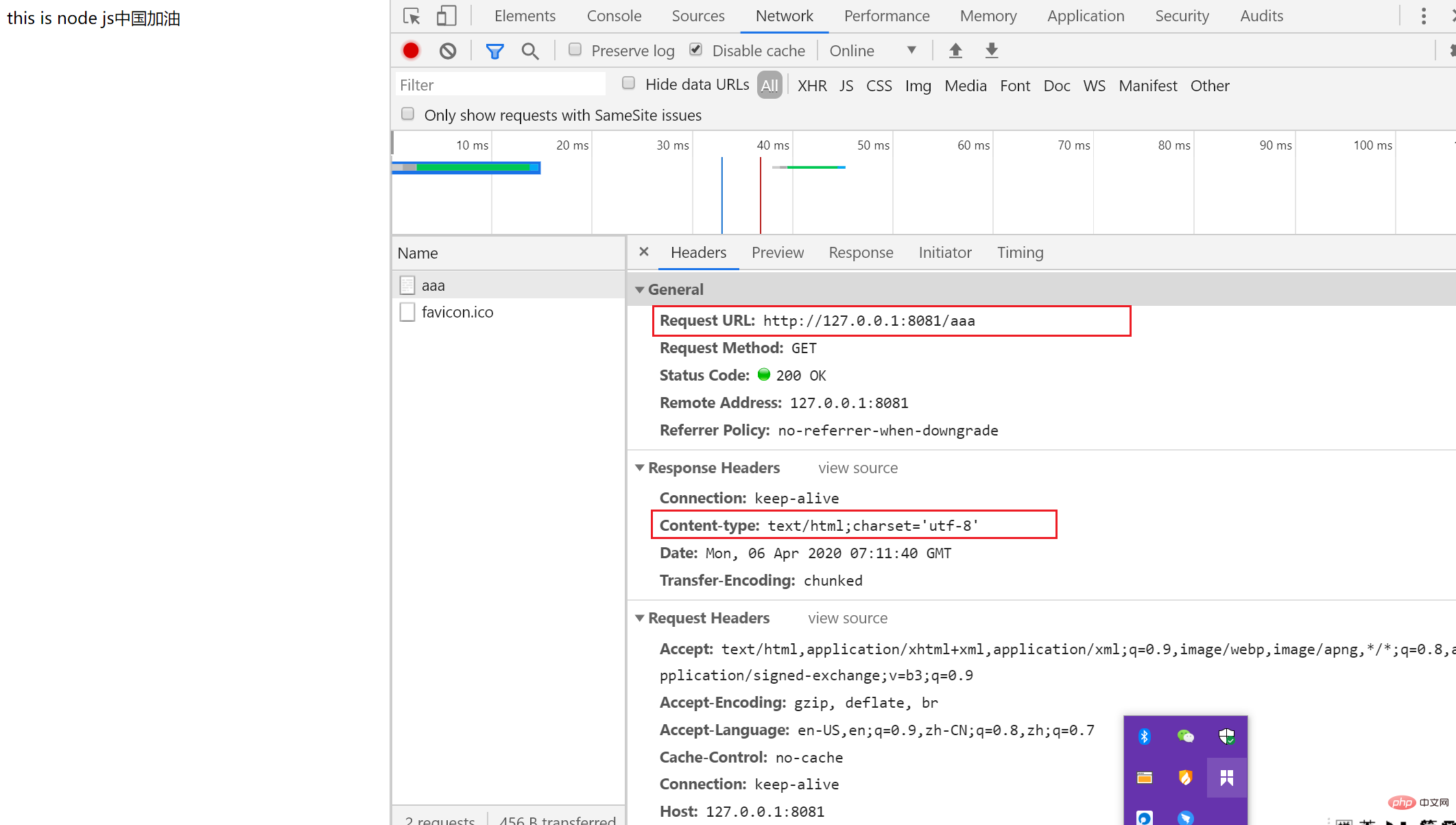
The most critical thing is the req.url attribute, which represents the user’s request URL address. All routing designs are implemented through req.url. What we are more concerned about is not getting the URL, but identifying the URL.
To identify the URL, the following url module is used
2. url module
##url .parse() Parse URLconst url = require('url')var api = 'http://www.baidu.com?name=zhangsan&age=18'console.log(url.parse(api))
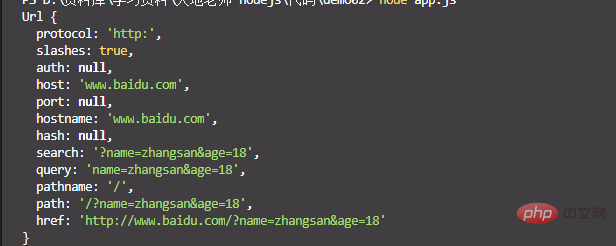
## When url.parse When the second parameter is true, look at the printed result
console.log(url.parse(api,true))
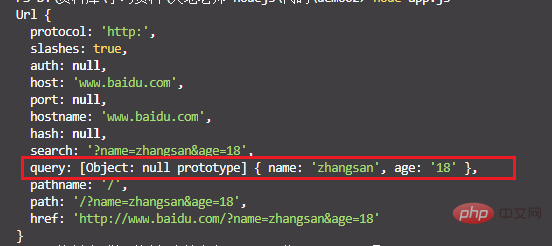 At this time the parameter is output in the format of an object
At this time the parameter is output in the format of an object
All we can get the parameters passed in the url through this method
const url = require('url')var api = 'http://www.baidu.com?name=zhangsan&age=18'// console.log(url.parse(api,true))let urlObj = url.parse(api,true).query
console.log(urlObj)  Now we Let’s see how to get the parameters in the url when making a request
Now we Let’s see how to get the parameters in the url when making a request
Based on the previous code, let’s see what parameters this req has
const http = require('http')
http.createServer(function(req,res) {
console.log(req.url) //获取url里面携带的参数
res.writeHead(200,{'Content-type':"text/html;charset='utf-8'"}) //设置响应头 console.log(req)
res.end() //响应结束}).listen(8081) //端口号
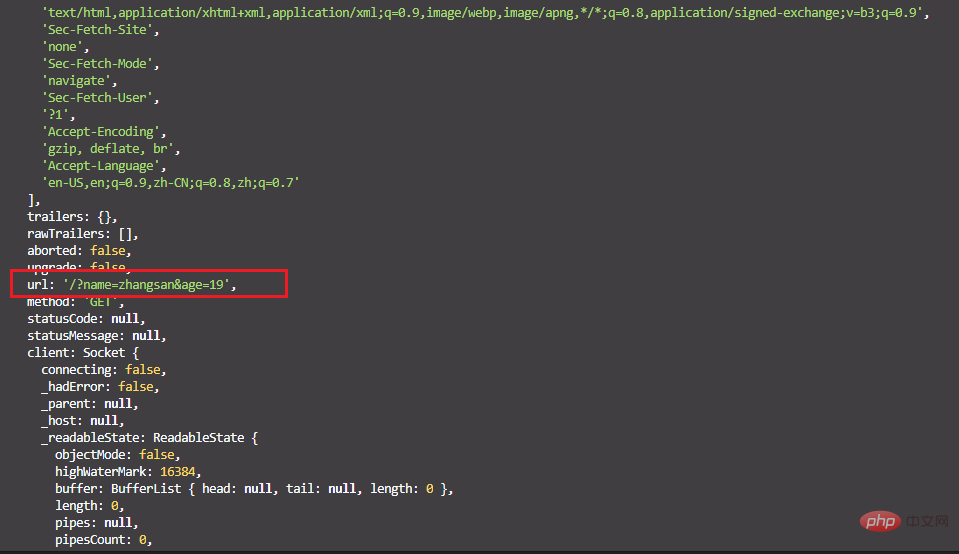
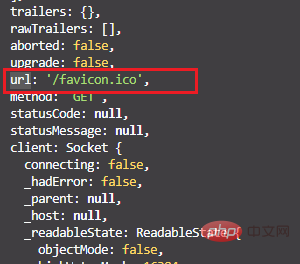 The last one is to request the browser icon. To get the parameters in the url, you need to exclude the last request
The last one is to request the browser icon. To get the parameters in the url, you need to exclude the last request
const url = require('url')
const http = require('http')
http.createServer(function(req,res) {
console.log(req.url) //获取url里面携带的参数 /?name=zhangsan&age=19
res.writeHead(200,{'Content-type':"text/html;charset='utf-8'"}) //设置响应头
// console.log(req)
if(req.url !== '/favicon.ico'){ var userinfo = url.parse(req.url,true).query
console.log(userinfo) //{ name: 'zhangsan', age: '19' }
console.log('姓名:'+userinfo.name, '年龄:'+ userinfo.age )
}
res.end() //响应结束}).listen(8081) //端口号The above is the detailed content of Examples to explain how to use the http module and url module in node. For more information, please follow other related articles on the PHP Chinese website!
 Main purpose of file system
Main purpose of file system
 How to solve garbled tomcat logs
How to solve garbled tomcat logs
 How to restore mysql database
How to restore mysql database
 How to use the decode function
How to use the decode function
 Is there a big difference between c language and Python?
Is there a big difference between c language and Python?
 index.html function
index.html function
 Win10 does not support the disk layout solution of Uefi firmware
Win10 does not support the disk layout solution of Uefi firmware
 How to open state file
How to open state file
 No service on mobile data
No service on mobile data